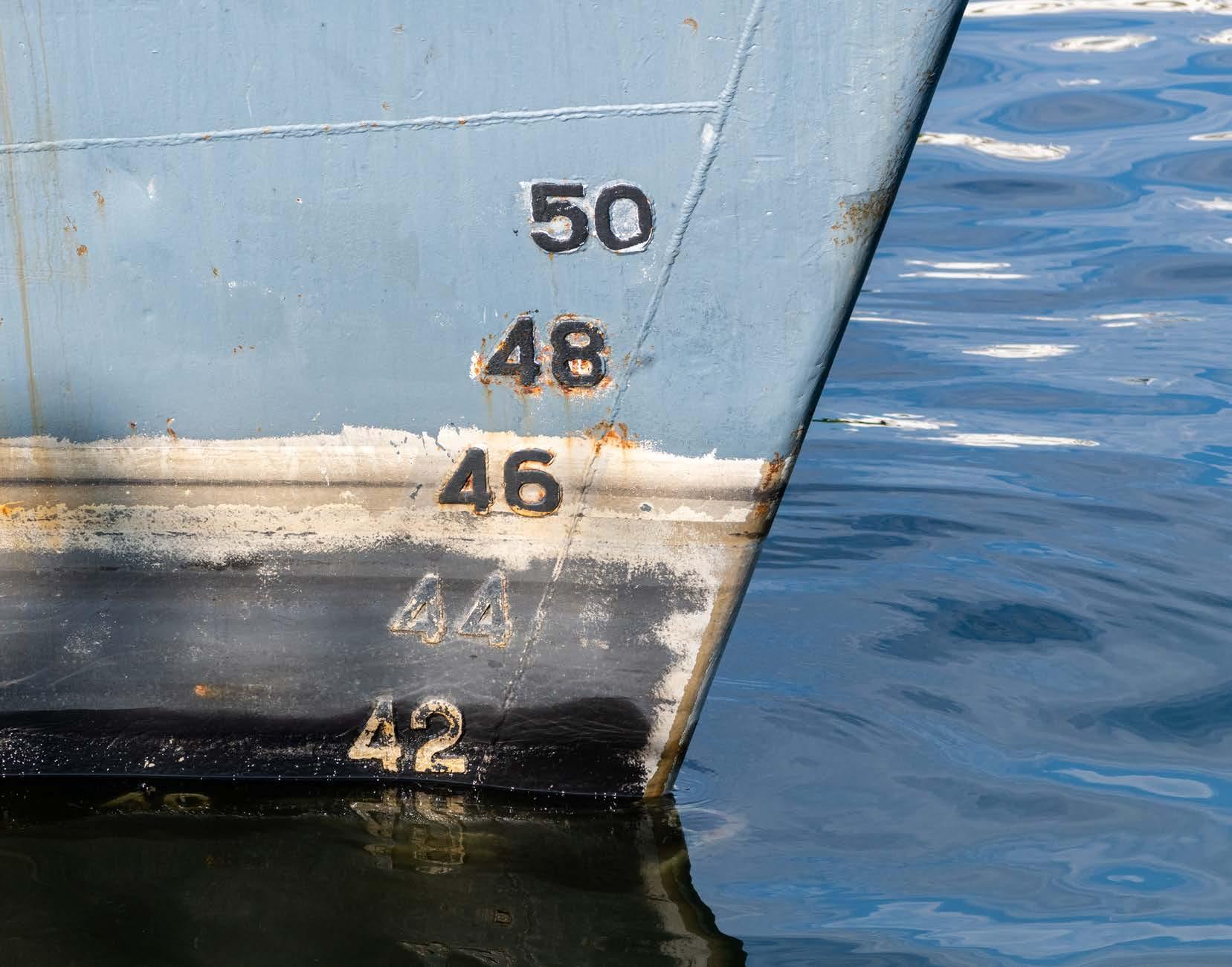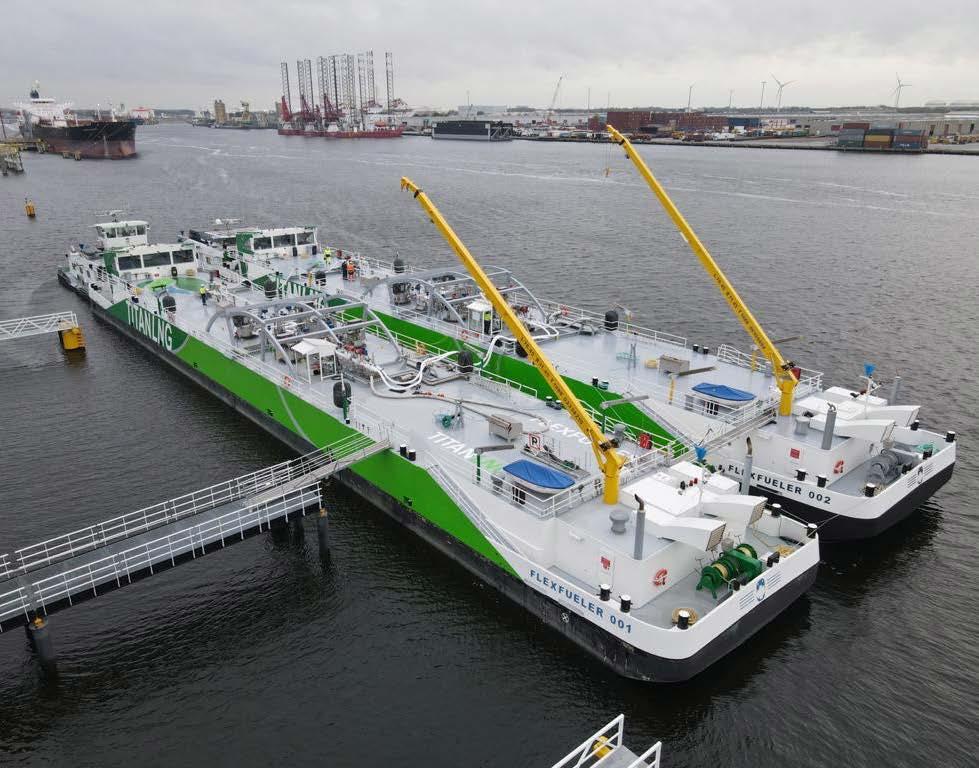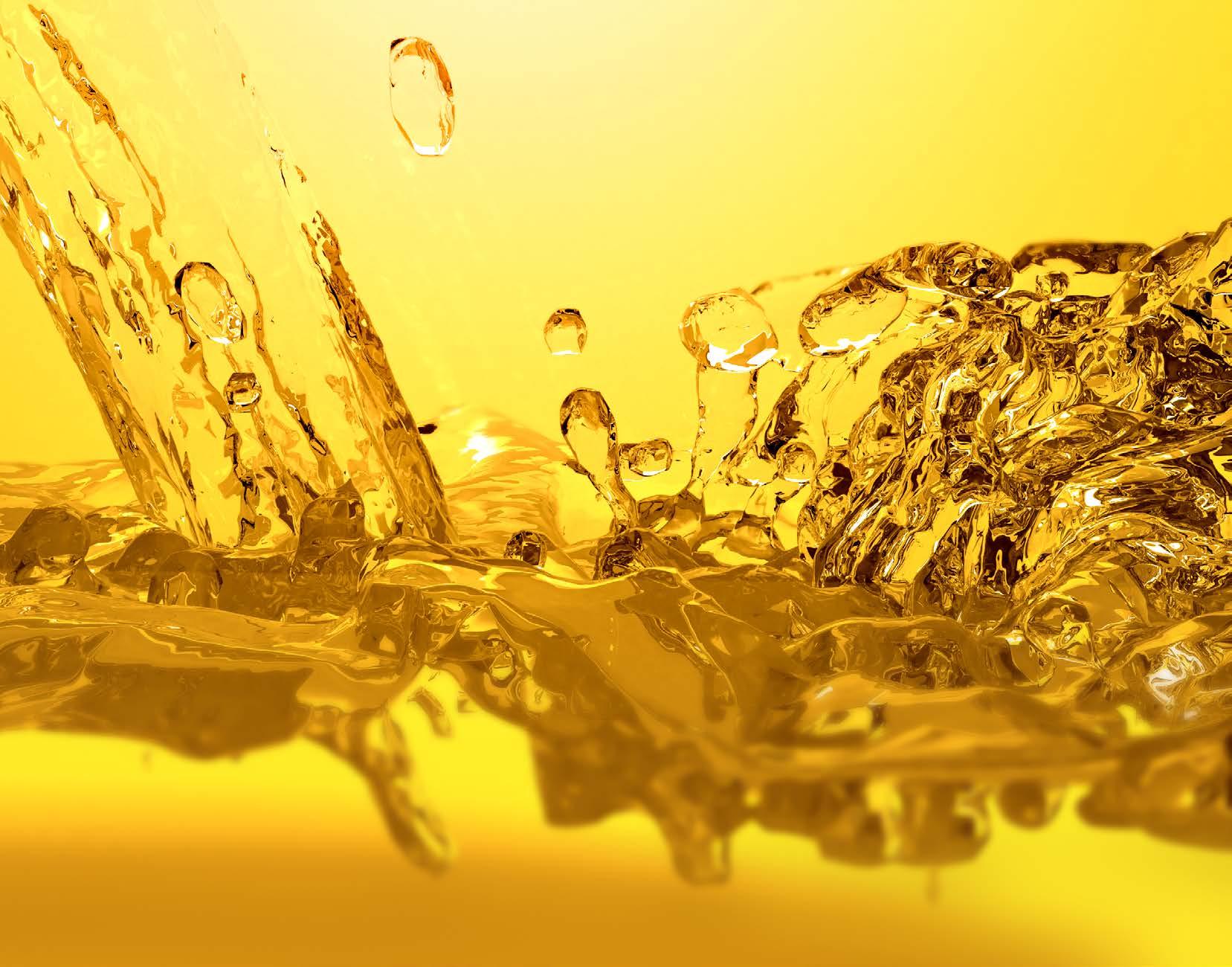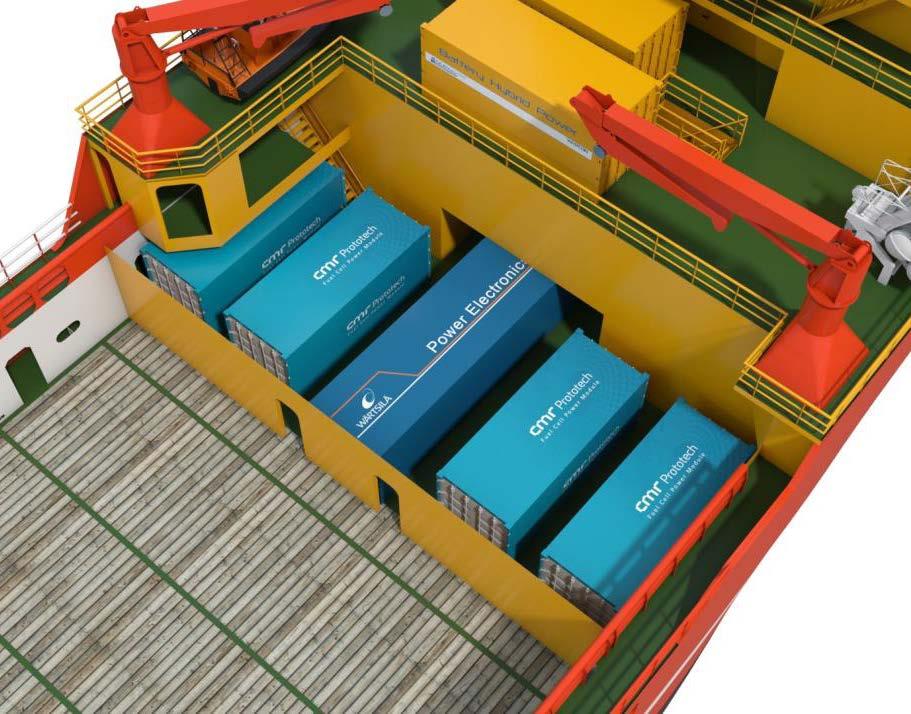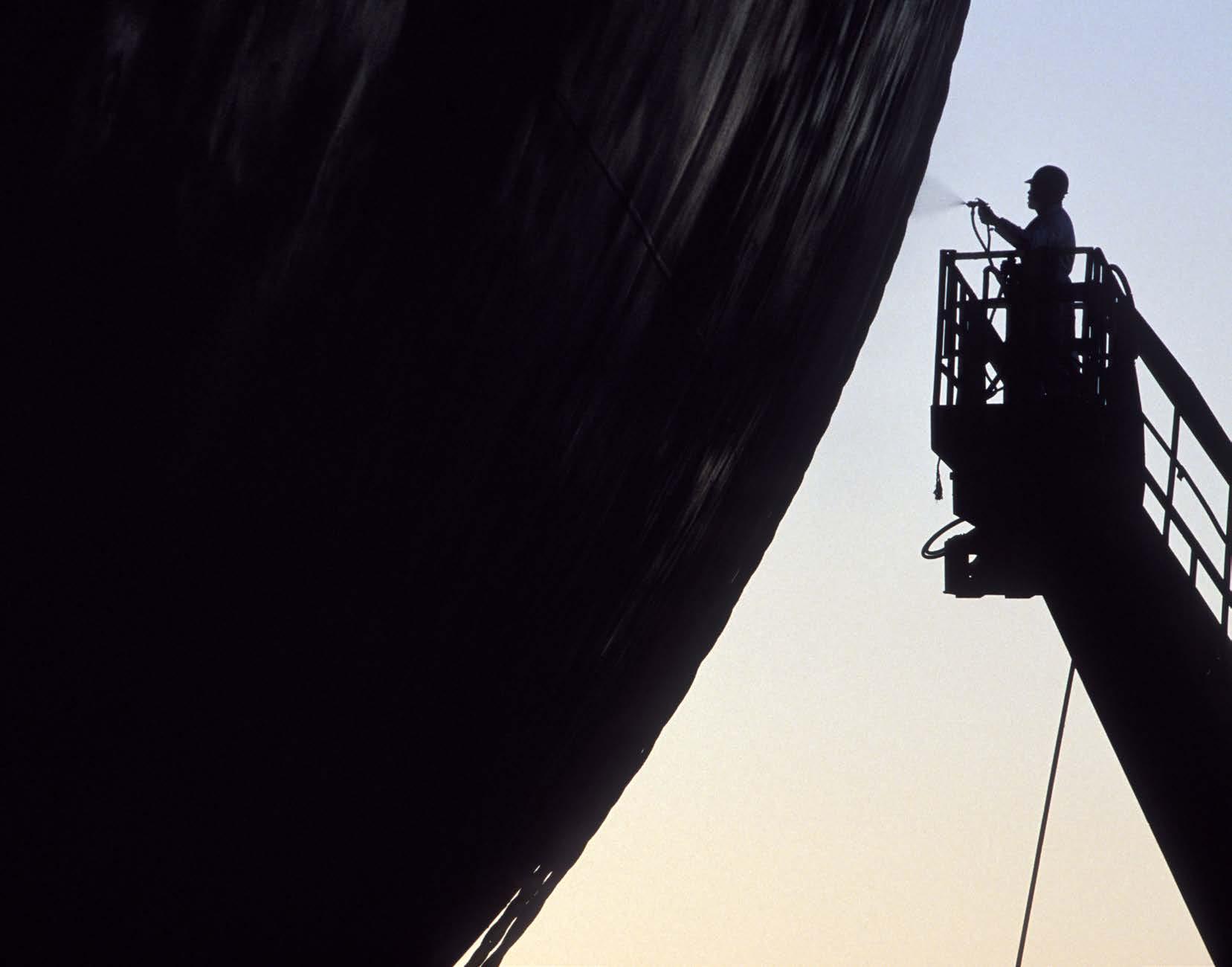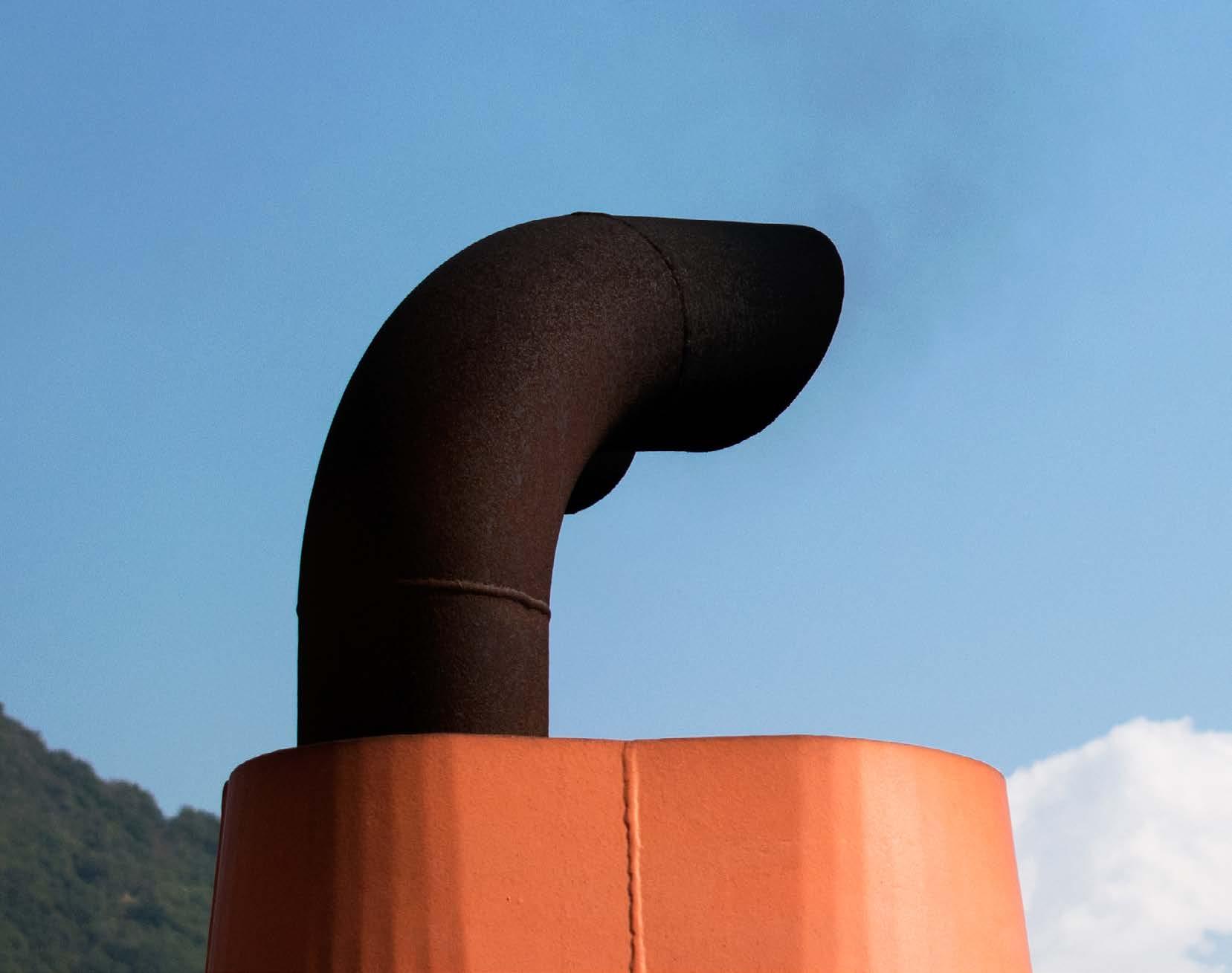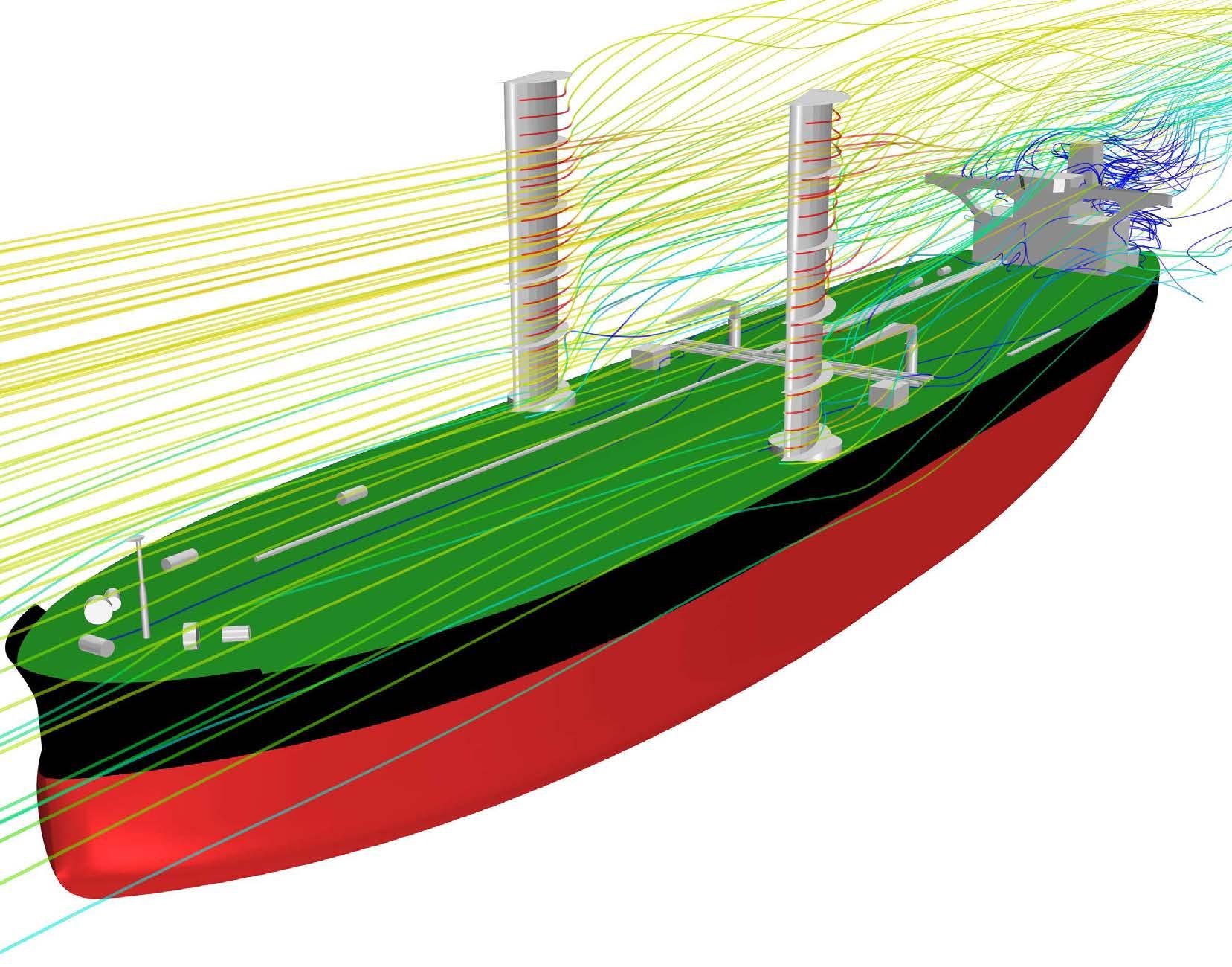
11 minute read
RECYCLING
from CSI Spring 2021
by Maritime-AMC
Petter Heier, Grieg Green CEO Sotiris Raptis, ECSA director marine safety & environment ICS’ expert John Stawpert
Ilker Sari, President Rata Shipping GMS head Dr Anil Sharma A recent seminar revealed industry leaders’ thoughts on the recycling industry and the standards that still need to be set
IS RECYCLING COMING UP
TO SCRATCH?
Effective from 31 December 2020, ships above 500 gross tonnes flying the flag of an EU/EEA member state, or third-party flagged vessels calling at European ports, must carry an Inventory of Hazardous Materials (IHM) certification on board – the EU Ship Recycling Regulation (SRR).
To make the process as efficient as possible, IHM services are now provided through digital platforms.
There are several companies offering this service. For example, DNV GL, soon to become DNV, has developed software under the banner of IHM Green Server (IGS) in the “My Services” area on its Veracity platform.
IGS can be used for the initial IHM Part I preparation, for approval and certification and for further maintenance activities.
The software can be used by any interested party, such as a shipyard, shipowner/manager or hazardous materials (HAZMAT) expert company. When the relevant data is entered, the software generates IHM Part I in a digital format:
To create a more efficient and transparent IHM approval and certification process, DNV GL introduced a feature in June last year to “Request IHM approval” in “My Services”.
PART I MAINTENANCE
IHM Part I should be properly maintained and updated throughout the operational life of the ship, reflecting new installations containing any HAZMAT referred to in Annex II of the EU SRR and relevant changes in the structure and equipment of the ship.
In case there is no procedure implemented on board the ship for the maintenance, a detailed inspection may be carried out by Port State Control.
DNV GL said that it was crucial an IHM maintenance procedure be established and implemented, and to identify products that fall into its scope. For these items, shipowners need to collect information in the form of Material Declarations (MDs) and Supplier Declaration of Conformity (SDoC).
The EU SRR states that “an IHM certificate shall cease to be valid, if the condition of the
ship does not correspond – with the particulars of that IHM certificate, including where IHM Part I has not been properly maintained and updated”. If a valid IHM certificate is not heldon board then a ship can be detained, DNV GL warned.
A real-time IHM is kept in the IGS software and can be generated at any time with one click. All the changes are recorded in the vessel’s audit trail, which acts as an IHM Maintenance Log Book.
REMOTE SURVEYS
Gaining greater relevance since the COVID-19 pandemic restricted travel, remote surveys and sampling under the EU SRR are now being offered by several companies.
According to the flag state Marshall Islands’ maritime administrator, when, due to covid-19 restrictions, on board attendance is not possible by an IHM expert company to conduct the sampling portion of the IHM Part I preparation, the ship’s crew can undertake this task under the remote guidance and direction of an expert company.
This is on condition that all documented training and qualification records are provided for the crew, which cover the sampling procedures, hazard awareness, and safety measures to be implemented, including the requisite personal protective equipment (PPE).
The IHM expert company should ensure that o- board visual and sampling checks are carried out in accordance with the plan prepared by the expert company. The samples should then be packaged and sent ashore to the expert’s appointed laboratory, and the IHM Part I process completed in the normal manner.
Where a vessel has a semi- or partially-completed IHM with an associated approved Statement of Compliance (SoC) that does not contain on-board (either targeted or random) sampling, the flag state will accept remote surveys provided that documentation is kept on board the ship indicating when it will be feasible for qualified samplers to complete the IHM.
When on-board attendance is not possible, due to covid restrictions and where an IHM Part I has been fully prepared, the administrator will agree to Recognised Organisations (ROs) conducting remote initial IHM surveys subject to their satisfaction with the contracted expert company’s experience, and that the IHM Part I complies fully with the EU’s SRR requirements and the guidelines contained in IMO Resolution MEPC.269(68).
Verification confirmation on board will be carried out at the next scheduled statutory survey where the RO surveyor’s physical attendance is possible.
This Technical Circular should be retained on board the vessel to present as evidence to EU Port State Control should there be any questions on the Administrator’ policy regarding this issue.
The circular is valid until 30 June, 2021, the date on which the “harmonised approach” by the EU on enforcing its SRR expires, unless otherwise extended.
ACCENTUATE THE POSITIVES
Despite still getting a bad press, the art of recycling ships has come a long way in the past 10 years.
Today, there are far more positives than there are negatives. Now, across the world, there is a mix of good and bad yard facilities worldwide, leading experts said at a recent seminar.
Many recycling yards have adopted compliance with the IMO’s Hong Kong Convention (HKC), the EU RSS and are operating in a safe and responsible way.
Global green recycling consultant Grieg Green’s CEO Petter Heier, part of the Norwegian familyowned Grieg Group, said scrapyard audits were being carried out based on EU regulations with other soft issues added, such as looking at the management of the recycling companies.
He thought that many yards were operating in “a good way”, especially in India. The ones that are perceived to be below standard had a lack of understanding of today’s issues and that includes some in Europe, Heier says, although he admitted that the European yards were more involved in newbuildings and shiprepair, so hadn’t taken recycling seriously.
Those yards embracing change, were mainly based in China – which has since banned the recycling of overseas ships, but could restart soon – Turkey and India. Bangladesh will hopefully come up to scrutiny in the not too distant future, he said.
It is not only the facilities that should pass audits, it is also the responsibility of the shipowner to send his or her assets to the right yards, he said.
Before the pandemic, Grieg Green had introduced a remote IHM survey capability. Heier believed that there are around 30,000 ships needing a hazardous material survey before the EU’s deadline.
Heier said that the use of remote surveys helps to create crew awareness on board, with seafarers becoming engaged and taking ownership of the IHM regulations by conducting their own HAZMAT surveys.
He went on to explain that it was necessary for expert companies to have a representative at the yard continuously, while one of their audited ships is being recycled.
There are now 10 or more IHM auditing companies and, as a result, a big change could be seen in yard personnel training and the general awareness of safety, efficiency and compliance, he said.
Grieg Green monitors the world’s top ship recycling facilities and audits them regularly. They must be ISO 9001, ISO 14001 and OHSAS 18001 certified, as well as adhering to the HKC and EU SRR.
Each yard must have developed a Ship Recycling Facility Plan where all technical and human aspects of the recycling process are described and covered ensuring that working and environmental conditions are met in a proper way.
The Basel Convention, which dates from 1992, was designed to control cross border movement of hazardous waste, especially from a developed country (OECD) to a nonOECD country.
A vessel sold for recycling is categorised as waste and a certain
process therefore needed to be followed if exporting the vessel from one country to its recycling destination.
The IMO’s HKC was adopted in 2009, with the intention to address the working and environmental conditions in ship recycling facilities globally.
Until recently, the convention has been ratified by 15 countries, including Norway, Denmark, Japan, Malta, Panama and India.
Heier said that Grieg Green uses the HKC guidelines as a basis for the technical standards.
In addition to the international regulations, local national regulations must be followed by recycling facilities, he said.
As well as China re-entering the recycling arena soon, India has plans to double its recycling capability by 2024.
This was revealed in the Indian Finance Ministry’s budget for fiscal year 2021 recently.
BILATERAL AGREEMENT
European Commission Shipowners’ Association (ECSA) director marine safety & environment Sotiris Raptis explained that the EU’s list of approved shipyards was updated last November.
He said that there was no agreement in place with India being a non-OECD country, but hoped that talks would take place on a bilateral agreement soon. The EU banning of Indian yards came under the 2019 Basil Ban agreement.
Discussions were underway at the EU regarding whether the EC should be allowed to negotiate the export of waste from an OECD to a non-OECD country. He confirmed that there would likely be a revision of the EU SRR in 2023 with possibly a financial incentive and an EU beneficial ownership scheme introduced.
AT THE CROSSROADS
The International Chamber of Shipping’s (ICS) manager environment & trade John Stawpert warns that the proposed 2023 EU rule changes could put up barriers and was more likely to penalise the European-based ship operator. “Europe is at the crossroads on this issue,” he said.
Europe must decide whether to adopt the HKC or go on its own path, he stressed. The thus-far unratified HKC has been good news and had led to the upgrading of recycling yards, he says. Another positive sign was the number of IACS class societies that had gone into some of the yards to help bring them up to standard.
Yard improvements were accelerating, he said, adding that several yards had already gone beyond the HKC in terms of facilities.
He admitted that Pakistan still had problems, but had committed at least publicly to improve the yards. With China possibly opening up again soon, this would bring more compliant recycling yards onstream.
Stawpert believed China might also ratify the HKC, which would mean it could be rubber-stamped by 2023. Bangladesh could also be compliant by the same year, but like everywhere has been hit by covid-19.
He pointed out that a Bangladesh yard even recycled Greenpeace’s Rainbow Warrior in a compliant way.
FACING ISSUES
Ilker Sari, President of Turkish-based Rata Shipping explained the situation from a Turkish viewpoint, saying that out of 26 plots available in the Izmir area in 800 acres of shoreline, 22 were active.
However, he said the Turkish recycling industry was facing issues, not least of which was that out of the 15 yards that applied to be listed with the EU, only seven were accepted when he thought around 10 would make it onto the list.
Recently both cruise ships and the offshore units had swelled Turkish yards with some cruise vessels having to layup in Europe to await space at a recycling yard, due to slot limitations.
He admitted that Turkey could not compete on a price per lightweight tonne (ldt) basis for a ship but that the yards could offer more of a quality recycling operation and proper management.
ALL ABOUT THE PRICE
Cash buyer GMS founder and CEO Dr Anil Sharma said recycling today was all about the price per ldt, supply of ships and regulations. He explained that GMS’s modus operandi was to take care of the entire logistics chain, including vessel deliveries to the yards.
“We execute deals based on the seller’s wishes and are not married to any one particular shipyard,” he explained.
Between January, 2020 and January this year, prices paid by the scrapyards have escalated by about 20%. There have also been a number of very large ore carriers (VLOCs) sold for recycling during the past year. These vessels can fetch up to $20m on the demolition market, resulting in recycling becoming competitive with the secondhand market.
He explained that a 10,000ldt bulk carrier took around 45 days to dismantle, but a cruise vessel was more complicated, having a greater number of components and could only be demolished at a rate of around 4-5,000ldt per month, thus a 20,000 ldt cruise ship could take five months to dispose of.
Many years ago, asbestos proved to be a major problem with cruise ships, but the industry is now much more careful given the IHM Code. Bangladesh has totally banned cruise ships on HAZMAT grounds but generally paid higher prices for other vessel types, as the country does not import raw materials for its domestic steel industry.
In general, he agreed that the yards were in a much better state than 10 years ago. There was a new generation of managers entering the sector and proper procedures were being put into place.
Dr Sharma said that he expected a lot more tankers to be circulated for recycling this year. He revealed that due to the rise in containership charter rates, GMS has sold several for further trading having purchased them originally for recycling.
He thought that the European Waste Management directive was just a paper exercise. It can take 60 days to organise exports, due to the amount of form filling needed, he claimed.
The number of HKC compliant recycling yards stands at around 92 in India, 14 in Turkey, two in China and one in Bangladesh. Thus far, no Pakistani yards have gained a certificate.

